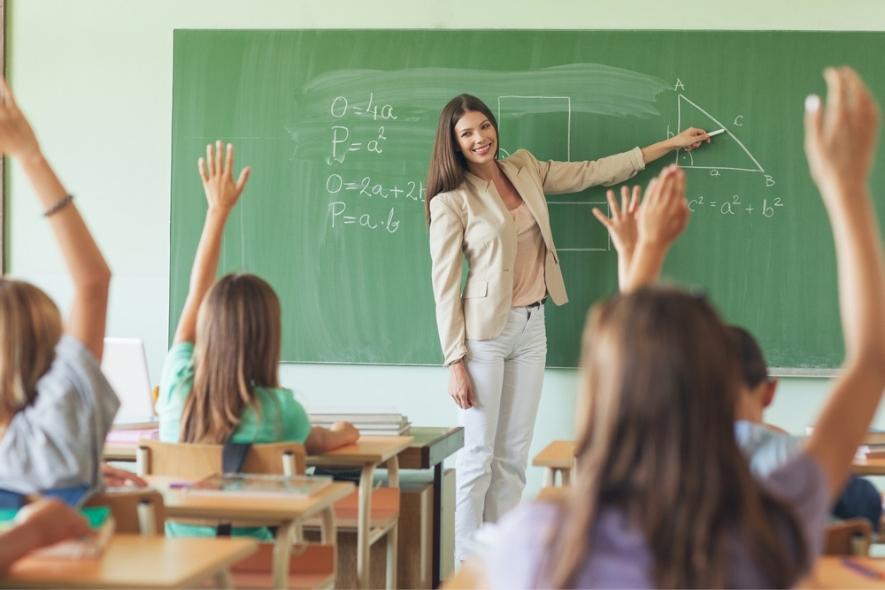Boost Your Child’s Confidence with Primary Science Tuition Singapore
Boost Your Child’s Confidence with Primary Science Tuition Singapore
Blog Article
A Comprehensive Overview to the Different Discovering Techniques in Primary Scientific Research Guideline
The expedition of diverse knowing methods in key scientific research direction provides a chance for teachers to enhance pupil involvement and understanding substantially. By examining hands-on understanding techniques, inquiry-based strategies, and collective strategies, we can determine reliable methods that accommodate different finding out styles. Furthermore, the integration of innovation and differentiated direction plays an important duty in fostering a comprehensive environment. The inquiry remains: exactly how can these methods be successfully implemented in the class to maximize their effect? The response exists in a better assessment of each approach and its ramifications for teaching scientific research.

Hands-On Understanding Techniques
Hands-on knowing methods play an essential duty in key scientific research instruction, engaging trainees in energetic expedition and trial and error. These approaches allow learners to communicate directly with products and sensations, cultivating a much deeper understanding of clinical principles. By utilizing manipulatives, versions, and real-life experiments, teachers develop an environment where students can observe, hypothesize, and test their ideas.
Such techniques not only boost understanding yet additionally grow crucial thinking and problem-solving skills. When students participate in tasks like building easy machines, growing seeds, or performing chain reactions, they are encouraged to ask questions and seek answers through their very own monitorings. This experiential approach helps to demystify complex scientific principles, making them a lot more available and relatable.
Furthermore, hands-on understanding advertises collaboration amongst peers, as students often operate in groups to carry out experiments or share findings. This synergy not only improves their knowing experience yet likewise creates vital social skills. Eventually, integrating hands-on methods in primary science guideline promotes a long-lasting love of discovering and curiosity concerning the environment, laying a solid foundation for future scholastic pursuits in scientific research and past.
Inquiry-Based Learning
Inquiry-based discovering is a training method that encourages trainees to ask inquiries, examine sensations, and create their very own understanding of scientific ideas. This technique moves the emphasis from typical teacher-led direction to a more student-centered experience, where learners take the initiative in their instructional journey. By promoting inquisitiveness, inquiry-based discovering promotes much deeper involvement with the material, permitting pupils to discover subjects in a purposeful context.
In practice, this strategy frequently includes hands-on experiments, monitorings, and vital thinking activities that straighten carefully with the clinical method. Trainees are urged to create hypotheses, style investigations, and evaluate data, which grows necessary abilities such as problem-solving and logical reasoning. The duty of the instructor in this structure is to assist in expedition, directing pupils via the questions process while urging independent thought and cooperation.
Additionally, inquiry-based learning nurtures a sense of possession over the discovering process, motivating pupils to seek understanding actively. This approach not only enhances understanding of clinical principles yet likewise promotes a lifelong love for discovering, equipping students with the abilities needed to navigate a progressively complex world.
Collaborative Knowing Approaches
Joint understanding strategies equip pupils to participate in purposeful interactions with peers, cultivating a common responsibility for their instructional outcomes. In primary scientific research instruction, these methods encourage learners to function with each other to explore clinical concepts, address problems, and perform experiments (primary science tuition Singapore). By taking part in group activities, students can take advantage of varied point of views, allowing for richer understanding and retention of clinical knowledge
One key element of collaborative knowing is the emphasis on communication abilities. Pupils need to express their thoughts, pay attention proactively to others, and bargain concepts, every one of which are important proficiencies in both academic and real-world contexts. This social communication not just enhances their understanding of scientific principles yet additionally promotes teamwork and dispute resolution abilities.
When pupils see the value of their payments within a group, they are more most likely to take ownership of their discovering trip. In general, incorporating collaborative understanding methods in primary science guideline cultivates a vibrant knowing environment that prepares trainees for future scholastic and social obstacles.
Technology Assimilation in Scientific Research
The assimilation of innovation in main science instruction enhances go to the website learning experiences by providing ingenious devices and sources that sustain numerous teaching methods, including collective understanding - primary science tuition Singapore. The usage of electronic systems, simulations, and interactive applications allows pupils to involve deeply with scientific principles, helping with a more hands-on method to understanding
Virtual research laboratories, as an example, enable students to conduct experiments securely and effectively, promoting inquiry-based learning. These tools can simulate real-world scientific situations, enabling students to imagine intricate processes that would be challenging to reproduce in a typical classroom setting. Technology fosters communication and collaboration among students, as they can share searchings for and function with each other on projects via online systems.
In addition, multimedia discussions and instructional video clips can enhance lessons by dealing with varied learning designs, making abstract ideas much more obtainable. Data evaluation tools also equip students to accumulate and translate clinical data, strengthening important assuming skills. Overall, the strategic incorporation of modern technology in main science guideline not only boosts involvement yet likewise prepares trainees for a highly innovative society, outfitting them with essential abilities for future scientific ventures.
Separated Direction Methods
Separated instruction strategies are essential for resolving the varied needs of students in main scientific research education. These methods make it possible for teachers to customize their mentor methods to suit varying capacities, interests, and learning styles within the classroom. By using differentiated direction, educators can create an inclusive atmosphere that cultivates interaction and improves understanding of clinical concepts.
One efficient technique is to use versatile grouping, which allows students to work together with peers at comparable skill go to website degrees or with differing perspectives. This strategy motivates peer learning and promotes crucial reasoning. Furthermore, using options in assignments can encourage trainees, enabling them to pick jobs that reverberate with their passions while still satisfying curricular goals.
Moreover, incorporating tiered jobs is another valuable method. By designing tasks with differing levels of complexity, teachers can make sure that all pupils are properly tested, despite their efficiency. Using developmental assessments to determine understanding further allows educators to readjust their training methods dynamically, ensuring that each learner gets the assistance they require.
Eventually, executing distinguished instruction approaches why not try this out in key science education not only improves student understanding end results but likewise grows an enthusiasm for science, preparing pupils for future academic searches.

Final Thought
In summary, effective main scientific research guideline requires a diverse method that includes hands-on understanding, inquiry-based techniques, and collective techniques. The combination of innovation and distinguished direction additionally caters to diverse learning styles, promoting an atmosphere helpful to exploration and essential reasoning.
The exploration of varied understanding methods in main science instruction presents a possibility for instructors to boost student interaction and comprehension dramatically.Hands-on understanding methods play a crucial role in key science direction, engaging pupils in energetic expedition and trial and error.Inquiry-based learning is a training strategy that encourages students to ask concerns, examine phenomena, and build their very own understanding of scientific concepts.Collaborative understanding methods encourage students to involve in significant interactions with peers, cultivating a common obligation for their educational end results. On the whole, integrating collective knowing techniques in main scientific research direction grows a vibrant understanding setting that prepares trainees for future scholastic and social obstacles.
Report this page